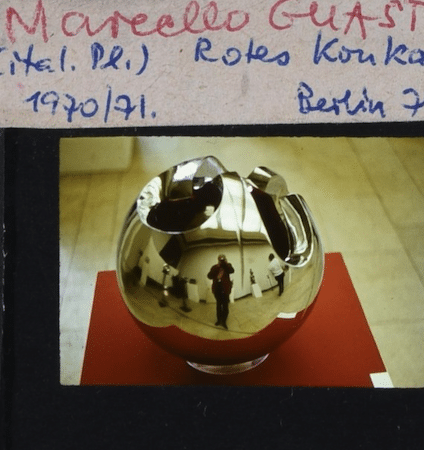Preliminary Remarks
The following reflections were initially put together after an invitation by the Student Council for Art History at the Ludwig Maximilian University in Munich to speak on the given topic in a lecture series on Marxist art interpretation in November 1964. The interest that these remarks aroused, the subsequent discussions about them at the Institute of Art History at Humboldt University in Berlin and with other colleagues, and the fact that—to the best of my knowledge—there is no comparable survey in German give me hope that it might be useful to share them with a wider circle of friends in art and Kunstwissenschaft for further discussion. The socialist cultural revolution makes high demands of Kunstwissenschaft, which must be satisfied in many areas: art historical research, art criticism, art theory, art conservation, art education, and popular science [Populärwissenschaft]. The fact that Kunstwissenschaft is lagging behind has been impatiently criticized from different quarters. The attempt to clarify its nature, possibilities, and tasks could help with the following: clearing up misunderstandings; giving tangible substance to the discussion; stimulating utterly necessary and thoroughly theoretical, methodological, and historical research; and—not least—further contributing to the dissemination of a Marxist-Leninist, dialectical-materialist Kunstwissenschaft. It would be misguided and an obstacle to the rapid development of this field [Wissenschaft] if one were to overlook that there are still clear gaps in the establishment of facts [Tatsachenerfassung], in methodology, even in the formulation of questions, and that we still cannot give fully satisfactory answers to many important questions about art and its history. Even so, within the framework of the most advanced and, indeed, adequate cognition of reality that is provided by dialectical and historical materialism, substantial accomplishments have been made to further the understanding of all processes and aspects of art. Consequently, more and more scholars are coming to the realization that real progress toward understanding the phenomenon of art cannot be achieved without taking Marxism into account.
My remarks do not constitute the final say on what Marxism “is” in Kunstwissenschaft. They are meant to contribute to it and its continuous development, which takes place naturally and in an ordered fashion [gesetzmäßig] through the work of many scholars and the perpetual transformation of objective reality. On some points, other Marxists will have different opinions. Given the current state of our field, this is inevitable, and I look forward to a thorough discussion. My reflections focus on the problem of art’s historical development, which also requires consideration of some problems of art theory. Specific questions about art criticism and the scholarly direction of contemporary cultural-political processes cannot be addressed within this framework, nor can those concerning the epistemology of general aesthetics or individual artistic processes. That being said, there is always a latent connection between my reflections and these questions. Incidentally, I use the term art [Kunst] to refer to the architectural, visual, and applied arts (with special consideration of the visual arts in the narrower sense). I am not qualified to write about other arts, such as literature, music, film, etc. However, it should be emphasized that the experiences gained in their practice, theory, and history can be fruitful for the study of the visual arts [Wissenschaft von der bildenden Kunst] as long as their respective specifics are not blurred.
It is not easy to explain in such a limited space which philosophical, methodological, and practical features characterize the study of Kunstwissenschaft that arose from the insights won by Karl Marx and Friedrich Engels and were enriched by Vladimir Lenin, as well as many other scholars and revolutionaries. This understandably involves a very extensive complex of questions, about which there are ample manuals and edited volumes, countless journal articles, and many thoughts in the minds of many scholars. No more than a brief sketch can be given here of what seems to the author most characteristic and most important about Marxism in Kunstwissenschaft. This is not a closed and rigid system or an obligatory textbook but a personal contribution to the ongoing, global discussion about developing and improving art historical [kunstwissenschaftlich] or any other knowledge. It goes without saying that not all of these insights are my own, nor were they developed on my own; any activity requires that one utilize and carefully adapt as much as possible the insights of others and those much wiser—beginning with the classics of Marxism and ending with the comrades of various labor collectives.
Given its brevity, the greatest danger of this sketch is that its treatment of some issues might seem hasty, overly apodictic, undifferentiated, and perfunctory; that, in many cases, there is only one sentence where an entire essay is needed as proof; and what is formulated as a thesis is actually still just a working hypothesis. The second danger is that the brevity of its theoretical generalization will make it seem too abstract. Necessarily stripped of the flesh and blood of historical diversity and vivid examples, it may initially seem just as frightening as any skeleton. But when anatomists want to show the bones, the basic structure of the body, they use the bare skeleton for demonstration. The greatest value of this sketch might be that it reveals the variety and attraction of these still-open, as-yet-unresolved problems and the enticing possibility of solving them with the help of Marxism.

